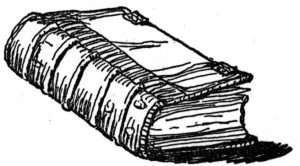
For this important occasion, the Real Academia Española (Royal Spanish Academy, commonly abbreviated RAE) plans to relaunch its renovated website. There, one can consult, in addition to their well-known dictionary, the linguistic entities of past eras, as well as other very useful dictionaries for researchers and translators. Additionally, last week the RAE inaugurated an exhibit of its history, titled La lengua y la palabra (“Language and Words”) where manuscripts, incunables, and various artistic pieces are on display. The exhibit can be seen in the National Library of Spain, and will be on display until January 2014.
The festivities will come to an end in October 2014, when the RAE publishes the 23rd edition of its dictionary. All of this, as reported by the Spanish newspaper El País, is the result of two years of preparation, carried out in part, as indicated by the institution’s director José Manuel Blecua, to “get the 200th anniversary off of our backs, which was barely celebrated.” Given this important anniversary, the Spanish Lottery will produce a bill with the image of the RAE, and the Royal Mint will produce a commemorative silver coin.
To view the Spanish version of this post, go to:





